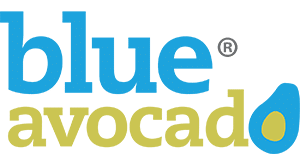Ten Quick Ways to Invigorate Board Meetings
Board members invest a lot of time and energy at board meetings. A few small changes can often make that investment pay off in important ways.

Make a resolution to implement at least one of the following ideas this month.
1. Supply name tags for everyone at every meeting.
It’s embarrassing to have seen people at several meetings and wondered what their names are… and later it’s really hard to admit you don’t know their names.
2. Make a chart of frequently used external and internal acronyms.
Make a chart of frequently used external and internal acronyms (such as CDBG for Community Development Block Grants or DV for domestic violence) and post it on the wall of every meeting. (If you distribute the list on paper, it is soon lost.) The chart will help people unfamiliar with the acronyms know what others are talking about.
3. Write an anticipated action for each agenda item.
Examples:
- Finance Committee report, brief questions and answers: Anticipated Action = no action needed.
- Volunteer recruitment and philosophy: Anticipated Action = form committee of three to four board members.
- Public Policy Committee: Anticipated Action = approve organizational statement to city council on zoning changes.
4. Make sure that each person says at least one thing at every board meeting.
This is the board chair’s responsibility, but everyone should help. “Cecilia, you haven’t spoken on this issue. I’m wondering what you’re thinking about it?” “Matt, at the last meeting you made a good point about finances. Are there financial issues here that we aren’t thinking about?”
5. Avoid one-way presentations from staff.
If you have a regular executive director’s report on the agenda, or if a staff program director is giving you a briefing, be sure that such presentations need a response from the board. If not, put such reports in writing in the board packet and just ask if there are any questions.
6. Don’t include committee reports on the agenda just to make the committees feel worthwhile.
If a committee has done work but a board discussion isn’t necessary, put the committee report in the board packet. In the meeting be sure to recognize the committee’s good work and refer people to the written report. Schedule committee reports according to the topic at hand, rather than at every meeting. For example, if a discussion is planned on attracting and retaining staff, reports from the finance committee and the personnel committee will be more useful and more memorable.
7. Have an open-ended discussion on at least one of the most important matters.
On the agenda, have an open-ended discussion on at least one of the most important matters facing the organization. For example, discuss the economic downturn, changes in government funding, possible reasons for declining preschool enrollment, a competitor organization, the possibility of losing donated space, or whatever matters are keeping the leadership awake at night.
8. Encourage “dumb” questions, respectful dissent, and authentic disagreements.
Find a chance to be encouraging, at every meeting: “Sylvia, I’m glad you asked that ‘dumb’ question. I wanted to know the answer, too.” “Duane, I appreciate the fact that you disagreed with me in that last discussion. Even though you didn’t convince me, your comment helped make the discussion much more valuable.”
9. Make sure the room is comfortable!
Not too hot or cold or crowded. Offer beverages and something light to eat such as cookies or fruit.
10. Adjourn on time, or agree to stay later.
Twenty minutes before the scheduled end of the meeting, the chair should ask whether the group wants to stay later: “If we continue this very interesting discussion, we will have to stay fifteen extra minutes to hear the recommendation on the executive director’s salary. Can everyone stay that long, or should we end this discussion and move to that one immediately?”
And a bonus suggestion:
Once every year or two, survey board members about meetings. Pass out a questionnaire for anonymous return to the board vice chair or secretary, asking, “What do you like best about board meetings? Least?” “Are you satisfied with what’s usually on the agenda?” “How could the board chair do more to encourage discussion at the meetings?” “Is the location or time of day difficult for you?”
This article and dozens of others are in Jan Masaoka’s book, Best of the Board Cafe Second Edition.
See also:
- Five Ways to Build the Board’s Sense of Self
- Should the Board Hold Executive Sessions?
- Boards of All-Volunteer Organizations
You might also like:
- Vision Before Strategy: A Nonprofit’s Guide to Defining Success
- Hedging Your Bets: Rajiv Shah, and the Limits of Large-Scale Changemaking
- Unlocking Potential: Collective Leadership in Nonprofits
- From Crisis to Clarity: Five Steps to Demystify Succession Planning
- The Expanded Matrix Map: Leveraging Your Triple Bottom Line for Fundraising
You made it to the end! Please share this article!
Let’s help other nonprofit leaders succeed! Consider sharing this article with your friends and colleagues via email or social media.
About the Author
Jan is a former editor of Blue Avocado, former executive director of CompassPoint Nonprofit Services, and has sat in on dozens of budget discussions as a board member of several nonprofits. With Jeanne Bell and Steve Zimmerman, she co-authored Nonprofit Sustainability: Making Strategic Decisions for Financial Viability, which looks at nonprofit business models.
Articles on Blue Avocado do not provide legal representation or legal advice and should not be used as a substitute for advice or legal counsel. Blue Avocado provides space for the nonprofit sector to express new ideas. The opinions and views expressed in this article are solely those of the authors. They do not purport to reflect or imply the opinions or views of Blue Avocado, its publisher, or affiliated organizations. Blue Avocado, its publisher, and affiliated organizations are not liable for website visitors’ use of the content on Blue Avocado nor for visitors’ decisions about using the Blue Avocado website.








These comments are great, but not for nonprofits that have no paid staff but rely on board members to run it. how can those board meetings be streamlined and made less ornery?
The things on this list can be done, even with groups of volunteers and nonprofits with no paid staff. I’ve led in both instances. The key is in the strength of the leader (President of board, or large committee chair).
If the group’s leaders can effectively delegate, vision cast and provide accountability, it can be done, but it takes discipline. In some cases, it takes awhile to change the status quo mindset of the "book report" meeting.
Most of the comments ARE applicable to boards with no staff. With no staff, there will be less paperwork (reports will be given orally with highlights in the minutes). Members don’t need name tags if “tent cards” with their names are brought out and placed in front of each person during each meeting. But, the president should be engaging the board as suggested.
I am 90% in disagreement with your #6. The ability to report at the board meeting is one of the ways the work of committee chairs and their committees get "paid". I don’t agree with letting them report "just to make the committees feel worthwhile" but I do believe in having them report no matter how little they are doing; it’s an accountability thing. Its also strategic…if the committee is needed and not productive, the board needs to be keenly aware of the hole in its programming strategy. If the need for the committee has passed, the board needs to keenly reminded. Relegating committee reports to the board packet or letting unproductive committees "hide in the board packet" is not, in my humble opinion, good board management.
Bob Horton, MS
CEO-Trinity River Environmental Education Society
bob.horton@rshorton.com
I agree. It has been my experience that board members tend not to read what is in their packets unless it is brought to their attention at the board meeting. Furthermore, the board as a whole should know what the committees are (or are not) doing, whether the committee is serving its intended purpose, moving forward with projects, etc.
I believe the same is true of staff reports. Perhaps they don’t need to be read verbatim, but staff should at least highlight what is in their reports.
Regarding Bob’s comment on #6 – we include all the committee reports in the board packet, and on the consent agenda for the Board meeting.
As an event is approaching, or if there is a concern, the committee chair will be asked to present an update on their work. This does not apply to the finance committee who always give their report, answering any questions.
I love the idea on #7 – having an open ended question – I’m passing this on to my Board Pres & the Vice-Pres. thanks!
Colleen A. McGauley, MPA
CASA of Kern County
www.kerncasa.org
I love this list! 🙂 I firmly believe that if a leader can run efficient and effective meetings, they can set themselves apart from the rest. Another awesome resource for leading great meetings is “Death By Meeting” by Patrick Lencioni. Its got some good examples of all types of meetings in the last section of the book.
FYI, I just passed on this post to all of the members of the two boards I am on! 🙂 Thanks for the post!
Janna Rust
www.purposefulleadershipblog.com
I love this list! 🙂 I firmly believe that if a leader can run efficient and effective meetings, they can set themselves apart from the rest. Another awesome resource for leading great meetings is “Death By Meeting” by Patrick Lencioni. Its got some good examples of all types of meetings in the last section of the book.
FYI, I just passed on this post to all of the members of the two boards I am on! 🙂 Thanks for the post!
Janna Rust
www.purposefulleadershipblog.com
I love the list! I have been working to establish a regular meeting SCHEDULE for our small, all-volunteer working board for a long time, and finally, about a year and a half ago, achieved that goal. BUT, I still have to wrangle with officers who really want to tell all the details about their month’s doings, and with how to really engage ALL board members at each meeting. 🙁 I guess I’m not the leader who is going to set herself apart from the rest.
I think it SHOULD be expected of Board members to read material between and before meetings if it is provided. (And as the person who has always done the preparation of board packets in my organization, I think it is only fair considering the effort it takes to PRODUCE the packet!). Maybe if the reports are not being read or understood, the annual poll of the board can get at how to make those reports more engaging. Will doing a graph help? Will a short training session work? Are reports focusing on the "wrong" information or not giving board members insight into what they need to do?
I’ve served on quite a few boards during my career; most people on the organization’s board have rarely served on even one. I think being a good board is a real art — and I am at a loss sometimes how to encourage more participation. You can’t get a report made from a committee if no one on the board is willing to take on the committee project!
One of the boards on which I serve, the Millikin-Decatur Symphony Orchestra Guild, occasionally has a music group play during our noon lunch. Members seem to look forward to the meetings, and it relates to our mission of supporting musical activities in Decatur.
By: Paul Rosenberger
These techniques purported to invigorate instead seem to me like standard best practices for a board meeting – or any meeting at all.
We’ve practiced these ‘tips’ at all of our board meetings as standard operating procedure. While they do contribute to a smoothly running meeting and the flow of discourse, they do nothing to promote engagement and innovation, nevermind invigoration.
Would love to see a post that offers some truly innovative ideas for getting a board to be productive and invested.
This one is key:- 9. Make sure the room is comfortable! Not too hot or cold or crowded. Offer beverages and something light to eat such as cookies or fruit. I’ve sat in way to many boardroom meetings where it was not only stuffy hot, but the only food was sugar laden cookies & doughnuts. Talk about sugar highs! Bring on the fruit! Steve
Really enjoyed reading the post. All the points said are appreciative Specially 6 and 7. Other points that can be added to make a successful board meeting could be Bring an informed point of view, Be upfront, open and honest, Establish a template and stick to it.
Love this, have incorporated many if these things over the years. Juanita
Love this, have incorporated many if these things over the years. Juanita